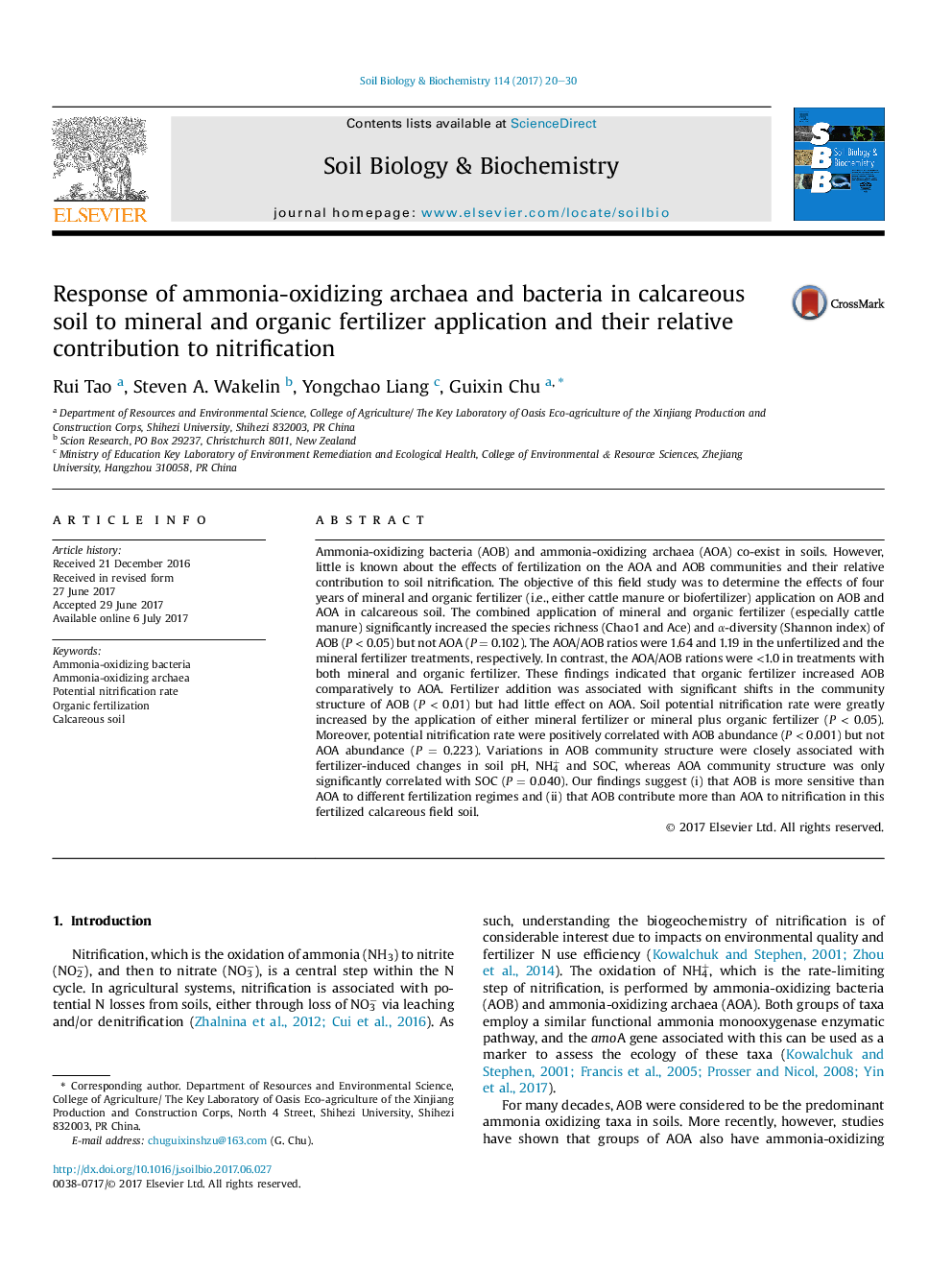| Article ID | Journal | Published Year | Pages | File Type |
|---|---|---|---|---|
| 5516303 | Soil Biology and Biochemistry | 2017 | 11 Pages |
â¢Fertilization affected the abundance and diversity of ammonia oxidizing bacteria.â¢Organic fertilizer changed the community structure of ammonia oxidizing bacteria.â¢Fertilization regime had little effect on ammonia oxidizing archea.â¢Ammonia oxidizing bacteria were correlated with potential nitrification rate.â¢Soil pH, NH4+, and organic C affected the ammonia oxidizing bacteria community.
Ammonia-oxidizing bacteria (AOB) and ammonia-oxidizing archaea (AOA) co-exist in soils. However, little is known about the effects of fertilization on the AOA and AOB communities and their relative contribution to soil nitrification. The objective of this field study was to determine the effects of four years of mineral and organic fertilizer (i.e., either cattle manure or biofertilizer) application on AOB and AOA in calcareous soil. The combined application of mineral and organic fertilizer (especially cattle manure) significantly increased the species richness (Chao1 and Ace) and α-diversity (Shannon index) of AOB (P < 0.05) but not AOA (P = 0.102). The AOA/AOB ratios were 1.64 and 1.19 in the unfertilized and the mineral fertilizer treatments, respectively. In contrast, the AOA/AOB rations were <1.0 in treatments with both mineral and organic fertilizer. These findings indicated that organic fertilizer increased AOB comparatively to AOA. Fertilizer addition was associated with significant shifts in the community structure of AOB (P < 0.01) but had little effect on AOA. Soil potential nitrification rate were greatly increased by the application of either mineral fertilizer or mineral plus organic fertilizer (P < 0.05). Moreover, potential nitrification rate were positively correlated with AOB abundance (P < 0.001) but not AOA abundance (P = 0.223). Variations in AOB community structure were closely associated with fertilizer-induced changes in soil pH, NH4+ and SOC, whereas AOA community structure was only significantly correlated with SOC (P = 0.040). Our findings suggest (i) that AOB is more sensitive than AOA to different fertilization regimes and (ii) that AOB contribute more than AOA to nitrification in this fertilized calcareous field soil.
